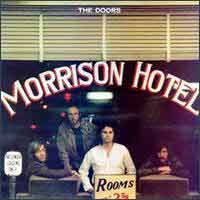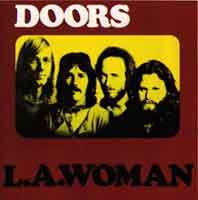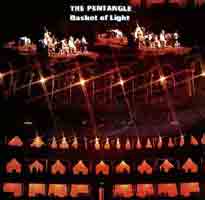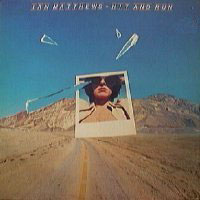Kompilationen, Sampler oder Greatest Hits-Zusammenstellungen interessieren
mich normalerweise nicht sonderlich. Im Normalfall kaufe ich mir von einer
Band, die ich mag, lieber direkt ein richtiges
Album als eine mehr oder weniger gelungene Zusammenstellung. Jetzt
als alter Mann habe ich von meinen Lieblingen
meist alle richtigen und wichtigen Alben - oder zumindest doch sehr viele.
Als Teenager fehlte mir früher natürlich
das Kleingeld für diese Extravaganz. Von manchen meiner Helden habe
ich mir damals in den 70ern deshalb nur eine solche Zusammenstellung anschaffen
können.
Viele dieser Platten kommen aus künstlerischer Sicht natürlich
nicht an die Originalalben heran, auch wenn sie in seltenen Fällen gar nicht
so schlecht sind. Allerdinx hat mich ihr Besitz oft auch noch zu späteren Zeiten,
als es mir finanziell schon deutlich besser ging, vom Kauf der richtigen
Alben abgehalten. Viele der Originale habe ich mir inzwischen natürlich
trotzdem angeschafft und Best Ofs aussortiert,
aber ein paar davon finde ich immer noch gut und möchte ihnen deshalb
an dieser Stelle mal ein wenig Aufmerksamkeit gönnen!
(12.06.2017)
| Fleetwood Mac: "Greatest Hits" (Columbia, Nov. 1971) |

- LPs: 1
- Songs:
- davon nur auf Single erhältlich:

 Mehr ...
Mehr ...
The famous red sleeved Fleetwood Mac's "Greatest Hits" album was an essential part of every decent album collection in the early 1970's as it represented the first greatest hits package from Fleetwood Mac, covering the period from the band's beginning in 1968 through to 1971. Fleetwood Mac in their original incarnation were led by led by guitarist Peter Green and were leaders of the second British Blues boom of the late 1960s, Fleetwood Mac enjoyed several hit singles in the United Kingdom at that time and these are collated here for this album originally issued on CBS Records only in the U. K. 'Albatross' was a huge chart hit in the UK whilst the single 'Black Magic Woman'helped to break Fleetwood Mac in the U. S.A via a cover version by Santana, who placed their version in the Billboard Top 40.
The album gatefold shows a full-size photo of the post-Peter Green line-up of the band with Christine McVie, even though she just plays piano on a couple tracks and wasn't a full-fledged member untilafter the"Kiln House" LP was released
|
| The Doors: "Weird Scenes Inside the Gold Mine" (Elektra, Jan. 1972) |
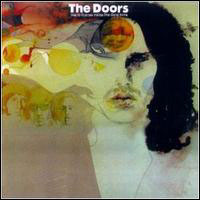 Das ist eine ziemlich gute Zusammenstellung aus den Alben der Band mit Jim Morrison,
vom titellosen Debüt von 1967 bis zum 71er Meisterwerk
"L. A. Woman", wenn auch kein "Best Of"
im engeren Sinne. Allerdings hat mich auch dieses Doppelalbum für viele Jahre vom Kauf der
Originale abgehalten.
Das ist eine ziemlich gute Zusammenstellung aus den Alben der Band mit Jim Morrison,
vom titellosen Debüt von 1967 bis zum 71er Meisterwerk
"L. A. Woman", wenn auch kein "Best Of"
im engeren Sinne. Allerdings hat mich auch dieses Doppelalbum für viele Jahre vom Kauf der
Originale abgehalten.
(13.07.2017)
- LPs: 2
- Songs: 22
- davon nur auf Single B-Seiten erhältlich: 2

 Mehr ...
Mehr ...
Weird Scenes Inside the Gold Mine was The Doors' second compilation album (following 13) and first to be released after the death of Jim Morrison, in January 1972. The album's title is a lyric from the song "The End". The album was released on compact disc for the first time on 19 May 2014 (almost exactly a year after keyboardist Ray Manzarek died). The album was certified Gold by the RIAA. The album cover was designed by Bill Hoffman, with inside band shots by Joel Brodsky.
Two of the songs on the compilation, "Who Scared You" and "(You Need Meat) Don't Go No Further," were originally released as B-sides to 1969's "Wishful Sinful" and 1971's "Love Her Madly," respectively. They were not included on albums until "Who Scared You" appeared in the The Doors: Box Set in 1997 and "(You Need Meat) Don't Go No Further" appeared in the 2006 Perception box set.
The version of "Who Scared You" that was released on The Doors: Box Set is an edited version, as part of the last verse is omitted. The full length song was released in 1999 on Essential Rarities and later on the 2006 remastered release of The Soft Parade as a bonus track.
(www.wikipedia.org)
Originally released in 1972, Weird Scenes Inside the Gold Mine was one of the earliest "best-of" Doors collections, compiling 22 tracks from the band not just limited to their many ubiquitous hits but including some more experimental tunes and a few obscure B-sides. This strange and sprawling playlist is heavy on material from L.A. Woman, and seems particularly invested in the darker, more sinister side of the band. Lesser-known songs here include "Who Scared You" and the goofy, awkward blues run "(You Need Meat) Don't Go No Further" sung by keyboardist Ray Manzarek. With the exception of a few pop moments, this lengthy collection sets a heavy and sometimes menacing mood, highlighting the Doors' most depraved, shamanistic moments in tracks like the brooding "The End," "Maggie McGill," and the absolutely evil groove of "When the Music's Over."
(by Fred Thomas, All Music Guide)
|
| Pentangle: "Pentangling" (Transatlantic, Aug. 1973) |
 Das beste der ersten fünf Alben, vom titellosen
Debüt von 1968 bis zum 71er Album "Reflection".
1972 war die Band zum amerikanischen Reprise-Label gewechselt,
sodass Transatlantic nur diese extrem leckere Resteverwertung blieb.
Das beste der ersten fünf Alben, vom titellosen
Debüt von 1968 bis zum 71er Album "Reflection".
1972 war die Band zum amerikanischen Reprise-Label gewechselt,
sodass Transatlantic nur diese extrem leckere Resteverwertung blieb.
(12.06.2017)
- LPs: 1
- Songs: 9
- davon unveröffentlicht: 0
|
| Guru Guru: "This Is Guru Guru" (Metronome/Brain, 1973) |
 Wahrscheinlich weil die Band im nächsten Jahr zu Atlantic wechselte, was wohl als eine große Ehre angesehen wurde,
aber kommerziell gnadenlos in die Hose ging, brachte Brain bzw. das "Mutterlabel" Metronome noch im selben Jahr
den 10-DM-Billigsampler "This Is Guru Guru" als Kombination jeweils der Hälfte von Album Nr. 3 und 4 heraus, den
ich mir damals kaufte: normale LPs kosteten immerhin 22 DM und der "Elektrolurch" war ja schließlich drauf!
Inzwischen stehen natürlich auch beide Album in meinem Plattenschrank!
Wahrscheinlich weil die Band im nächsten Jahr zu Atlantic wechselte, was wohl als eine große Ehre angesehen wurde,
aber kommerziell gnadenlos in die Hose ging, brachte Brain bzw. das "Mutterlabel" Metronome noch im selben Jahr
den 10-DM-Billigsampler "This Is Guru Guru" als Kombination jeweils der Hälfte von Album Nr. 3 und 4 heraus, den
ich mir damals kaufte: normale LPs kosteten immerhin 22 DM und der "Elektrolurch" war ja schließlich drauf!
Inzwischen stehen natürlich auch beide Album in meinem Plattenschrank!
(26.11.2024)
- LPs: 1
- Songs: 5
- davon unveröffentlicht: 0
|
| King Crimson: "A Young Person´s Guide To King Crimson" (Island/E.G., 1976) |
 Die klassischen King Crimson waren Geschichte, als dieses Doppelalbum
erschien. Eine vorzügliche Auswahl vom grandiosen Debüt "In
The Court Of The Crimson King" bis zum 74er Trio-Album "Red"!
Die klassischen King Crimson waren Geschichte, als dieses Doppelalbum
erschien. Eine vorzügliche Auswahl vom grandiosen Debüt "In
The Court Of The Crimson King" bis zum 74er Trio-Album "Red"!
(12.06.2017)
- LPs: 2
- Songs: 15
- davon unveröffentlicht: 1

 Mehr ...
Mehr ...
For almost two decades before King Crimson's catalog became a minefield of odd retrospectives, live oddities, and archival treasure troves, A Young Person's Guide to King Crimson was the only worthwhile retrospective the band had ever had -- or seemed likely to receive. Originally released in 1976 following the band's apparently irrevocable split of the year before, this Robert Fripp-compiled double album rounded up an excellent, if somewhat idiosyncratic, survey of the group's seven years together, its contents ranging from the unimpeachable classics to unimaginable rarities -- the pre-Crimson demo of "I Talk to the Wind" was a collector's dream at the time, while the presence of "Groon" took the heat off anyone who missed out on its sole previous appearance, as the B-side of 1970's "Cat Food" single. Of the other tracks, three-fifths of the debut album included the anthemic poles of "21st Century Schizoid Man" and "Epitaph," and served to remind just how powerful In the Court of the Crimson King was on release, while more recent highlights included both "Red" and "Starless" from the band's final album (Red), Starless and Bible Black's eternally atmospheric "The Night Watch," and, as if to prove that the band's sense of humor was never far from the surface, the ribald saga of "Ladies of the Road." A vast booklet of facts and figures, again compiled by Fripp and drawing from his own squirrel-like horde of King Crimson memorabilia, rounded off the package. It's a sign of just how well conceived this collection was that, no matter how many more so-called "best-ofs" the band has endured, A Young Person's Guide remains the definitive study of the original King Crimson.
(by Dave Thompson, All Music Guide)
|
| Caravan: "Canterbury Tales:
The Best Of Caravan" (Decca/Deram, Nov. 1976) |
 Auch die Caravan-Zusammenstellung erschien, nachdem die Band das alte
Plattenlabel verlassen hatte ... Hier ist eine intereassate Auswahl aus den
Alben der Decca-Jahre versammelt, vom zweiten Album "If I Could Do It Again, I'd Do It All Over You"
von 1970 bis hin zu "For Girls Who Grow Plump In The Night" von 1973.
Auch die Caravan-Zusammenstellung erschien, nachdem die Band das alte
Plattenlabel verlassen hatte ... Hier ist eine intereassate Auswahl aus den
Alben der Decca-Jahre versammelt, vom zweiten Album "If I Could Do It Again, I'd Do It All Over You"
von 1970 bis hin zu "For Girls Who Grow Plump In The Night" von 1973.
(12.06.2017)
- LPs: 2
- Songs: 11
- davon unveröffentlicht: 1
|
| Neil Young: "Decade" (Reprise, Nov. 1977) |
 Ein wirklich guter Sampler. Auf drei LPs (bzw. 2 CDs) alle wichtigen Songs
von 1966-76. Das ganze hatte bloß einen Haken: Der Besitz von "Decade"
hat mich jahrelang davon abgehalten, mir die Originalalben zu besorgen!
Ein wirklich guter Sampler. Auf drei LPs (bzw. 2 CDs) alle wichtigen Songs
von 1966-76. Das ganze hatte bloß einen Haken: Der Besitz von "Decade"
hat mich jahrelang davon abgehalten, mir die Originalalben zu besorgen!
(ca. 2000)
Ganz klar: das ist einer meiner Lieblinx-Sampler, mit dem Besten von Neil aus den
ersten 10 Jahren seiner Karriere (Spötter sagen: mit dem Besten von ihm überhaupt).
Das geht von den Anfangstagen mit Buffalo Springfield,
zusammen mit Stephen Stills, bis hin zum von vielen unterschätzten, von mir aber
heißgeliebten Album "Long May You Run",
ebenfalls zusammen mit Stephen Stills und dem Gemischtwarenladen
"American Stars 'n' Bars". Dazu kommt viel Rares von Singles,
z.B. die "Heart Of Gold"-B-Seite "Sugar Mountain" und die
Crosby, Stills, Nash & Young-Single "Ohio".
Und Glanzstücke späterer Alben, z.B. "Like A HurricanE", aufgenommen 1975,
aber erst 1977 auf "American Stars 'n' Bars" erschienen.
(01.07.2017)
- LPs: 3
- Songs: 35
- davon unveröffentlicht bzw. nur auf Single erhältlich: 7

 Mehr ...
Mehr ...
|
"Given the quirkiness of Neil Young's recording career, with its
frequent cancellations of releases and last-minute rearrangements of material,
it is a relief to report that this two-disc compilation is so conventional
and so satisfying. A 35-track selection of the best of Young's work between
1966 and 1976, it includes songs performed by Buffalo Springfield, Crosby,
Stills, Nash & Young, and the Stills/Young Band, as well as solo work.
In addition to five unreleased songs, Decade offers such key tracks as
the Springfield's "Mr. Soul," "Broken Arrow," and
"I Am a Child"; "Sugar Mountain," a song that had
appeared only as a single before; "Cinnamon Girl," "Down
by the River," and "Cowgirl in the Sand" from Everybody
Knows This Is Nowhere; "Southern Man" and the title track from
After the Gold Rush; and "Old Man" and the chart-topping "Heart
of Gold" from Harvest. This is the material that built Young's reputation
between 1966 and 1972, although he is more idiosyncratic with the later
material, including the blockbusters "Like a Hurricane" and
"Cortez the Killer" but mixing in more unreleased recordings
as the set draws to a close. He seems intent on making the album a listenable
one that will appeal to a broad base of fans, and he succeeds despite
the exclusion of much of the harrowing work of 1973-1975. Nevertheless,
the album is an ideal sampler for new listeners, and since there is no
one-disc Young compilation covering any significant portion of his career,
this lengthy chronicle is the place to start." (William Ruhlmann)
|
|
| Ian Matthews: "Discreet Repeat" (Rockburgh, 1978) |
 Eine sehr schöne, vor allem aber labelübergreifende Zusammenstellung des unterbewerteten Sängers,
die Lieder aus allen seinen Alben der 70er bis hin zum Veröffentlichungsdatum aufweist.
Da Matthews aber nach Joni Mitchells "Woodstock"
mit der Band Matthews Southern Comfort aber keine Hits mehr hatte und seine Folgealben bei diversen
Labels zwar durchweg gut, aber leider auch hitfrei waren, ist die tasächliche Liedauswahl wohl doch eher
eine Geschmackssache gewesen. Deshalb wohl auch kein Wort von Greatest Hits,
sondern der bescheidene Titel "Discreet Repeat". Fragt mich aber nicht, für welche
Zielgruppe das Album also konzipiert war. Aber egal - eine schöne Zusammenstellung
mit schönen Liedern einer der besten britischen Gesangsstimmen ist das allemal.
Eine sehr schöne, vor allem aber labelübergreifende Zusammenstellung des unterbewerteten Sängers,
die Lieder aus allen seinen Alben der 70er bis hin zum Veröffentlichungsdatum aufweist.
Da Matthews aber nach Joni Mitchells "Woodstock"
mit der Band Matthews Southern Comfort aber keine Hits mehr hatte und seine Folgealben bei diversen
Labels zwar durchweg gut, aber leider auch hitfrei waren, ist die tasächliche Liedauswahl wohl doch eher
eine Geschmackssache gewesen. Deshalb wohl auch kein Wort von Greatest Hits,
sondern der bescheidene Titel "Discreet Repeat". Fragt mich aber nicht, für welche
Zielgruppe das Album also konzipiert war. Aber egal - eine schöne Zusammenstellung
mit schönen Liedern einer der besten britischen Gesangsstimmen ist das allemal.
(01.10.2017)
- LPs: 2
- Songs: 27
- davon unveröffentlicht: 0

 Mehr ...
Mehr ...

This is a nice cross-label compilation which features some of his best work (stuff recorded for Vertigo, Elektra, and Mooncrest) as well as some of his least interesting work. If you are a fan of Matthews, you likely own all these records already. If not, this compilation will help you decide which areas of his career you will need to concentrate on in order to build your Ian Matthews collection.
(by Jim Worbois, All Music Guide)
|

 Mehr ...
Mehr ...
 Das ist eine ziemlich gute Zusammenstellung aus den Alben der Band mit Jim Morrison,
vom titellosen Debüt von 1967 bis zum 71er Meisterwerk
"L. A. Woman", wenn auch kein "Best Of"
im engeren Sinne. Allerdings hat mich auch dieses Doppelalbum für viele Jahre vom Kauf der
Originale abgehalten.
Das ist eine ziemlich gute Zusammenstellung aus den Alben der Band mit Jim Morrison,
vom titellosen Debüt von 1967 bis zum 71er Meisterwerk
"L. A. Woman", wenn auch kein "Best Of"
im engeren Sinne. Allerdings hat mich auch dieses Doppelalbum für viele Jahre vom Kauf der
Originale abgehalten. Mehr ...
Mehr ...
 Das beste der ersten fünf Alben, vom titellosen
Debüt von 1968 bis zum 71er Album "Reflection".
1972 war die Band zum amerikanischen Reprise-Label gewechselt,
sodass Transatlantic nur diese extrem leckere Resteverwertung blieb.
Das beste der ersten fünf Alben, vom titellosen
Debüt von 1968 bis zum 71er Album "Reflection".
1972 war die Band zum amerikanischen Reprise-Label gewechselt,
sodass Transatlantic nur diese extrem leckere Resteverwertung blieb. Wahrscheinlich weil die Band im nächsten Jahr zu Atlantic wechselte, was wohl als eine große Ehre angesehen wurde,
aber kommerziell gnadenlos in die Hose ging, brachte Brain bzw. das "Mutterlabel" Metronome noch im selben Jahr
den 10-DM-Billigsampler "This Is Guru Guru" als Kombination jeweils der Hälfte von Album Nr. 3 und 4 heraus, den
ich mir damals kaufte: normale LPs kosteten immerhin 22 DM und der "Elektrolurch" war ja schließlich drauf!
Inzwischen stehen natürlich auch beide Album in meinem Plattenschrank!
Wahrscheinlich weil die Band im nächsten Jahr zu Atlantic wechselte, was wohl als eine große Ehre angesehen wurde,
aber kommerziell gnadenlos in die Hose ging, brachte Brain bzw. das "Mutterlabel" Metronome noch im selben Jahr
den 10-DM-Billigsampler "This Is Guru Guru" als Kombination jeweils der Hälfte von Album Nr. 3 und 4 heraus, den
ich mir damals kaufte: normale LPs kosteten immerhin 22 DM und der "Elektrolurch" war ja schließlich drauf!
Inzwischen stehen natürlich auch beide Album in meinem Plattenschrank!  Die klassischen King Crimson waren Geschichte, als dieses Doppelalbum
erschien. Eine vorzügliche Auswahl vom grandiosen Debüt "In
The Court Of The Crimson King" bis zum 74er Trio-Album "Red"!
Die klassischen King Crimson waren Geschichte, als dieses Doppelalbum
erschien. Eine vorzügliche Auswahl vom grandiosen Debüt "In
The Court Of The Crimson King" bis zum 74er Trio-Album "Red"! Mehr ...
Mehr ...
 Auch die Caravan-Zusammenstellung erschien, nachdem die Band das alte
Plattenlabel verlassen hatte ... Hier ist eine intereassate Auswahl aus den
Alben der Decca-Jahre versammelt, vom zweiten Album "If I Could Do It Again, I'd Do It All Over You"
von 1970 bis hin zu "For Girls Who Grow Plump In The Night" von 1973.
Auch die Caravan-Zusammenstellung erschien, nachdem die Band das alte
Plattenlabel verlassen hatte ... Hier ist eine intereassate Auswahl aus den
Alben der Decca-Jahre versammelt, vom zweiten Album "If I Could Do It Again, I'd Do It All Over You"
von 1970 bis hin zu "For Girls Who Grow Plump In The Night" von 1973. Ein wirklich guter Sampler. Auf drei LPs (bzw. 2 CDs) alle wichtigen Songs
von 1966-76. Das ganze hatte bloß einen Haken: Der Besitz von "Decade"
hat mich jahrelang davon abgehalten, mir die Originalalben zu besorgen!
Ein wirklich guter Sampler. Auf drei LPs (bzw. 2 CDs) alle wichtigen Songs
von 1966-76. Das ganze hatte bloß einen Haken: Der Besitz von "Decade"
hat mich jahrelang davon abgehalten, mir die Originalalben zu besorgen! Mehr ...
Mehr ...
 Eine sehr schöne, vor allem aber labelübergreifende Zusammenstellung des unterbewerteten Sängers,
die Lieder aus allen seinen Alben der 70er bis hin zum Veröffentlichungsdatum aufweist.
Da Matthews aber nach Joni Mitchells "Woodstock"
mit der Band Matthews Southern Comfort aber keine Hits mehr hatte und seine Folgealben bei diversen
Labels zwar durchweg gut, aber leider auch hitfrei waren, ist die tasächliche Liedauswahl wohl doch eher
eine Geschmackssache gewesen. Deshalb wohl auch kein Wort von Greatest Hits,
sondern der bescheidene Titel "Discreet Repeat". Fragt mich aber nicht, für welche
Zielgruppe das Album also konzipiert war. Aber egal - eine schöne Zusammenstellung
mit schönen Liedern einer der besten britischen Gesangsstimmen ist das allemal.
Eine sehr schöne, vor allem aber labelübergreifende Zusammenstellung des unterbewerteten Sängers,
die Lieder aus allen seinen Alben der 70er bis hin zum Veröffentlichungsdatum aufweist.
Da Matthews aber nach Joni Mitchells "Woodstock"
mit der Band Matthews Southern Comfort aber keine Hits mehr hatte und seine Folgealben bei diversen
Labels zwar durchweg gut, aber leider auch hitfrei waren, ist die tasächliche Liedauswahl wohl doch eher
eine Geschmackssache gewesen. Deshalb wohl auch kein Wort von Greatest Hits,
sondern der bescheidene Titel "Discreet Repeat". Fragt mich aber nicht, für welche
Zielgruppe das Album also konzipiert war. Aber egal - eine schöne Zusammenstellung
mit schönen Liedern einer der besten britischen Gesangsstimmen ist das allemal. Mehr ...
Mehr ...





